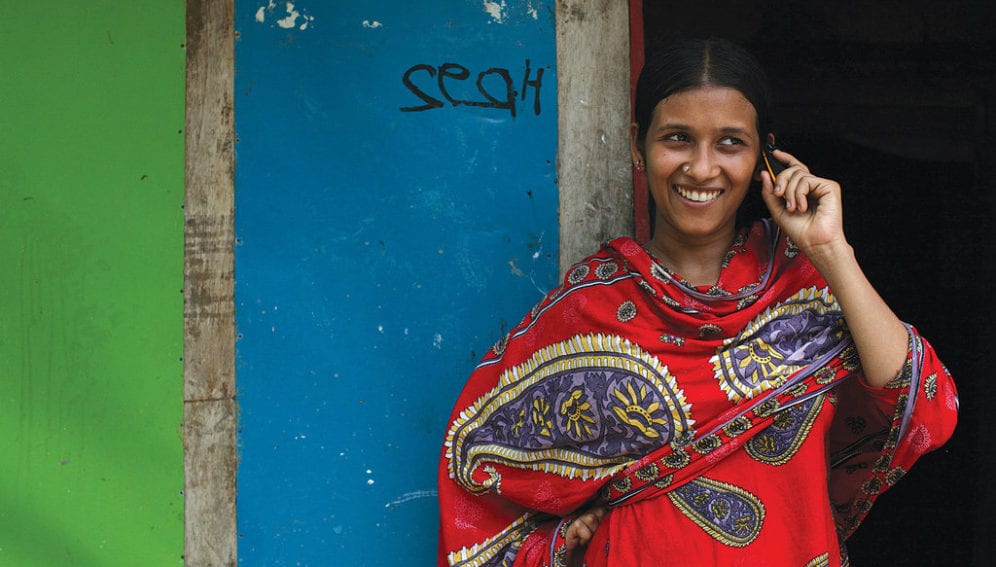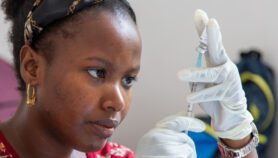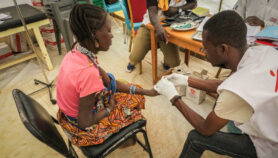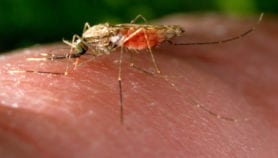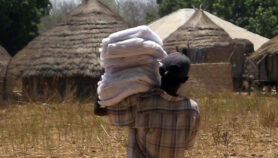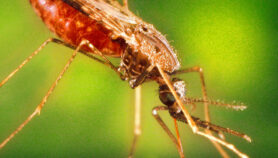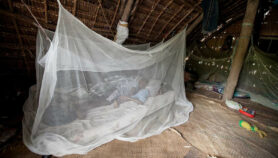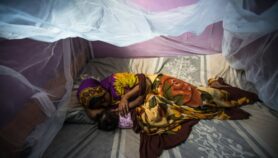By: Naimul Haq
Send to a friend
The details you provide on this page will not be used to send unsolicited email, and will not be sold to a 3rd party. See privacy policy.
[DHAKA] Mobile phones along with local knowledge and field support, can help to ensure the effective diagnosis and treatment of malaria in remote rural areas, according to a study in Bangladesh.
Researchers examined almost 1,000 phone calls to report suspected cases of malaria that were made over two years by inhabitants of a hilly and forested part of the country bordering Mynamar. This area, called the Chittagong Hill Tracts, has Bangladesh’s highest malaria rates.
The study, published in Malaria Journal this month (4 February), was part of a wider research project on malaria epidemiology being carried out by the International Centre for Diarrhoeal Disease Research, Bangladesh (icddr,b) and the US-based Johns Hopkins Malaria Research Institute.
SPEED READ
- Residents of a remote part of Bangladesh called health workers to report suspected malaria
- These mobile phone calls allowed faster diagnosis and care
- In addition to phones, local knowledge and field support are key to effective treatment
The researchers found that phone calls, which were made to locally recruited field workers or one of the members of the study team and then followed up by visits, were a useful way to detect and treat the disease in this community.
Although people could report suspected malaria to field workers when they visited local communities, a slightly greater number of suspected cases were reported using mobile phones, leading the researchers to conclude that the use of mobiles had helped to increase the number of potential cases tested and treated.
They suggest that more rapid diagnosis and treatment may help to lessen people's reliance on local medicine men or drug vendors, therefore reducing the risk of incorrect results and inappropriate treatment — and the threat of drug resistance.
Wasif Ali Khan, lead author of the study and a researcher at the icddr,b tells SciDev.Net they also found that the proportion of confirmed malaria cases reported by mobile phones was higher in the most remote areas with no access to roads.
Khan adds that the use of mobile phone technology has the potential to build awareness of malaria through community participation.
Jacob Khyang, an icddr,b manager of the field research in Bandarban within the Chittagong Hill Tracts, tells SciDev.Net: "The use of mobile phones made our work very easy and diagnosis of the cases was also faster as we could reach the infected patients much quicker due to faster communications".
The researchers say that access to and use of mobile phones has "increased dramatically" in this area, as it has done in many remote areas of developing countries.
But because of limited mobile phone network coverage and the fact that only around a fifth of households owned at least one mobile phone, people in the study area often had to borrow phones or climb hills to get a signal needed to make calls.
Also, the study says that technology alone is insufficient and has to be paired with "on-the-ground knowledge of the area and the people", as was the case in this study.
Several mobile phone users in the region speaking to SciDev.Net were positive about future healthcare delivery programmes to tackle malaria.
Pai Mong U, a resident of one neighbourhood of the Kuhalong area of the Chittagong Hill Tracts, says: "All the 15 cases detected in our area were reported by mobile phone. What else can you expect in such remote, hilly areas?"
He adds that the residents received proper treatment thanks to the use of mobile phones and the icddr,b team.
References
Malaria Journal doi: 10.1186/1475-2875-12-48 (2013)


